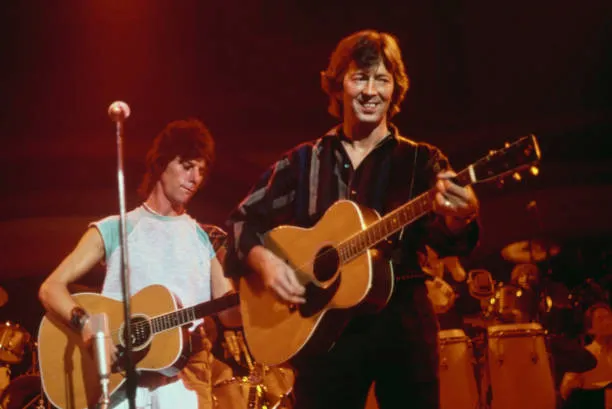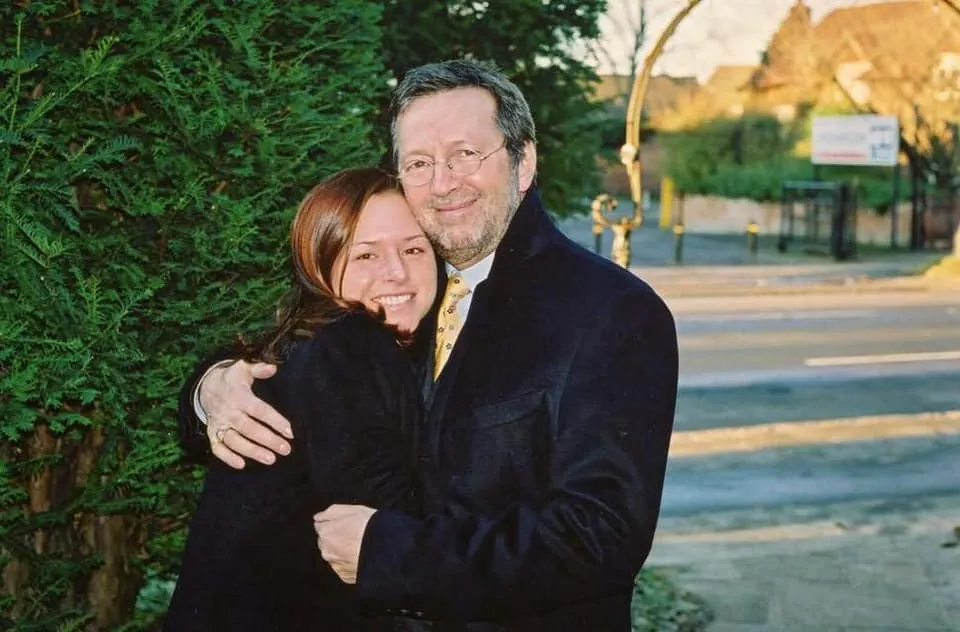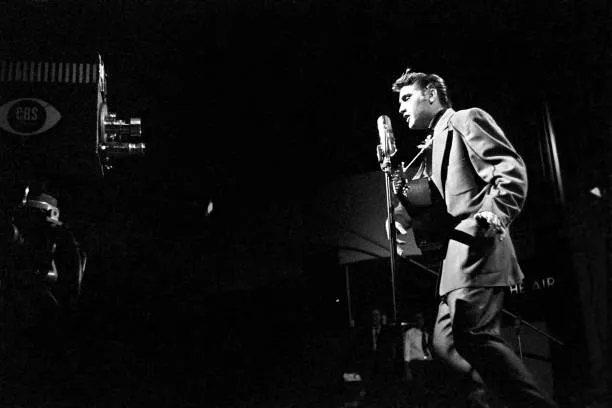Elvis Presley remains an indelible figure in popular culture, and his legacy is shaped by countless memorable moments captured in film and photographs.
However, among the thousands of images documenting his extraordinary life, one picture stands out as particularly poignant—the last photo ever taken of Elvis Presley.
On the night of August 16, 1977, the King of Rock and Roll was captured driving into the gates of Graceland in his 1973 Stutz Blackhawk, after a late-night dentist appointment with Dr. Lester Hoffman.
This photo has since become a haunting memento of a legend on the brink of his untimely demise.
Real Pictures of Elvis Presley
The final years of Elvis’ life were marked by a combination of dazzling public performance and profound personal struggles.
Despite the challenges he was facing, including health issues and a demanding schedule, Elvis continued to be charismatic and deeply beloved by fans across the world.
Real pictures of Elvis Presley often reflect this duality, capturing both the grandeur of his public persona and the vulnerability of his private life.
On the night of August 15, Elvis went to a routine dentist appointment with Dr. Lester Hoffman in Memphis.
Unbeknownst to all, this would be his last outing. The appointment ended late, and in the early hours of August 16, Elvis was photographed driving back to his home, Graceland.
The image shows him in the driver’s seat of his Stutz Blackhawk—an epitome of his larger-than-life style. This single photograph, taken as he entered the gates and drove up the driveway of his iconic mansion, carries an eerie sense of finality.
The Legend of the Stutz Blackhawk
Elvis had a love for luxury cars, and his 1973 Stutz Blackhawk was no exception. This custom-built vehicle was a manifestation of Elvis’ taste for the extravagant.
The car, with its sleek curves and opulent interior, embodied the grandeur that Elvis exuded in all aspects of his life.
Real pictures of Elvis Presley often show him with his prized vehicles, and the Stutz Blackhawk was among his favorites.
As he drove through the gates of Graceland that fateful night, the sight of the Blackhawk seemed almost emblematic of Elvis himself—a once inimitable force of nature heading into the twilight of his remarkable life.
The car's cherry-red paint glistened under the low lights, juxtaposing the grim reality that awaited.
This image has been eternally etched into the annals of pop culture, representing the dichotomy of Elvis' existence: boundless talent and joy shadowed by private sorrow.
Capturing the Final Moment

Photographs wield tremendous power; they capture fleeting moments that often gain significance only in hindsight.
The last photo of Elvis Presley, taken as he entered Graceland, has been analyzed and revisited innumerable times.
The person who took the photo remains anonymous, a fan perhaps, fortunate to have been at the right place at the right time.
This particular photo is grainy, taken in the dim light of an early Memphis morning. Elvis is visibly tired, yet there’s an air of determination as he grips the steering wheel.
For someone who spent a lifetime in the spotlight, this photo reveals a rare glimpse of Elvis in a quiet, unguarded moment.
It serves as a bittersweet reminder that even the most larger-than-life figures experience moments of solitude and vulnerability.
The Final Hours
After driving through the gates of Graceland, Elvis spent his last hours in the confines of his beloved home.
Accounts from those close to him reveal that he conversed with family members, played the piano, and read spiritual literature.
The photo captured as he drove into Graceland is thus not just the last public image of Elvis, but also a prelude to his final, private moments.
By the afternoon of August 16, Elvis was found unresponsive and later pronounced dead. The news sent shockwaves across the globe, with fans and fellow musicians grappling to comprehend the loss of a cultural icon.
For many, the last photo of Elvis re-entering his sanctuary presents an enduring image of a legend returning to one final rest.
The Impact of the Last Photo
The last photo of Elvis Presley holds significant emotional weight for his fans. It’s more than just a snapshot; it serves as a symbol of the end of an era.
For those who idolized him, this image is a reminder of his humanity—of a man who, despite his fame and fortune, was not immune to the frailties of life.
Moreover, this photograph encapsulates the mystique surrounding Graceland, Elvis’s cherished home.
Graceland wasn’t just a mansion; it was a reflection of Elvis himself—a place filled with both opulence and introspection.
The significance of this last photo extends beyond Elvis' life, cementing Graceland as a pilgrimage site for fans all over the world.
Reflection on a Legacy

As time goes on, real pictures of Elvis Presley continue to hold remarkable influence.
The last photo of him driving into Graceland epitomizes the blend of sorrow and celebration that marks his legacy.
It's a poignant reminder of the fleeting nature of life and fame, but also of the enduring power of art.
Elvis Presley’s impact on music and culture transcends generations.
From his early days revolutionizing rock and roll to his later years as a Las Vegas showman, Elvis continually reinvented himself.
Each era of his career is documented through countless photographs, yet it is the last picture that perhaps resonates the most deeply.
It’s a stark reminder that behind the glitz and glamour, Elvis Presley was a human being with vulnerabilities and complexities.
An Enduring Fascination
In the digital age, where manipulated images and doctored videos abound, real pictures of Elvis Presley stand as authentic testaments to his life and career.
Fans old and new seek out these images, yearning to connect with the unfiltered reality of their idol.
The last photo, in particular, remains a focal point of this fascination. It's an unvarnished snapshot that tells a story words often fail to capture.
In the years since his passing, Elvis Presley’s influence shows no sign of waning. His music continues to inspire, and his life remains a subject of endless intrigue.
The last photo taken of him serves as a somber yet fitting closure to his extraordinary life—a quiet moment before the world bid farewell to the King of Rock and Roll.
The last photo of Elvis Presley, taken as he drove into the gates of Graceland in his 1973 Stutz Blackhawk, carries a weight of history and emotion.
It is a final, fleeting moment captured forever, symbolizing both the end of a remarkable life and the lasting legacy of a cultural icon.
For fans and historians alike, this image is more than just a photograph; it is a poignant reminder of the man behind the myth, returning one last time to the place he called home.



